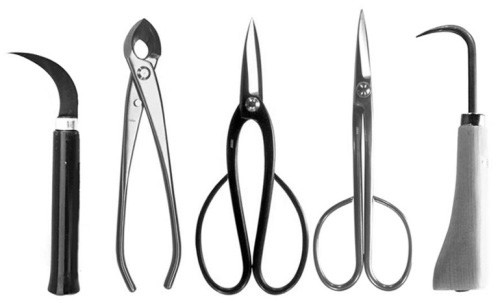Japanese black pine (Pinus thunbergii) just after trimming and wiring (the before photo is below). From our Masters' Series Pine Book.
Whenever Michael Hagedorn writes, I read. What follows is part of a post by Michael from his Crataegus Bonsai blog:
“For fertilizing bonsai, we can make this one basic distinction: Begin fertilizing a young, unrefined tree when it begins growing early in the spring. Wait a bit with an older, refined tree—usually begin fertilizing when it’s just hardening off it’s spring growth…
Quiz: If we were to fertilize everything the same, strongly, starting early in the year, what would happen?
The young trees would stay forever young
The old, developed trees would become young again.” Here’s the rest of Michael’s post.
Michael doesn’t talk about which fertilizers he uses, so… in my experience, and in the Japanese tradition, well-balanced, mild organic slow-release fertilizers are the best. Slow release means steady nourishment to the roots and fairly mild means no risk of root burn and no damage to beneficial microbes. When it comes to well-balanced, mixing (or alternating) two or three types of fertilizers works best.
Three fertilizers we use. Green Dream pellets and Rape Seed cakes are slow release. Bonsai Pro is a mild liquid fertilizer, for an extra boost. All of our fertilizers are now 25% off at Stone Lantern.
Well fed and at the peak of health. Now it's ready for trimming and wiring. Both photos of this tree are from our Masters' Series Pine book. BTW, it's not that often you see the base of a trunk almost completely fill the mouth of the pot.
Look familier? Though I’ve added some words and changed things around a bit, the photos and much of the text in this post are from our archives.
NEW Sale
25% off Koyo Japanese Bonsai Tools
 plus FREE Shipping on U.S. orders 49.00 or more
plus FREE Shipping on U.S. orders 49.00 or more